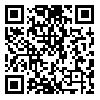BibTeX | RIS | EndNote | Medlars | ProCite | Reference Manager | RefWorks
Send citation to:
URL: http://sjsph.tums.ac.ir/article-1-5413-en.html
2- Ph.D. Associate Professor, Determinants of Health Research Center, Yasuj University of Medical Sciences, Yasuj, Iran ,
3- Ph.D. Student, Department of Epidemiology, Student Research Committee, Shiraz University of Medical Sciences, Shiraz, Iran
4- Ph.D. Associate Professor, Determinants of Health Research Center, Yasuj University of Medical Sciences, Yasuj, Iran
5- MSc. Student, Department of Health Education and Promotion, School of Public Health, Student research Committee, Yasuj University of Medical Sciences, Yasuj, Iran
Background and Aim: Self-medication, as a common risky health behavior, has financial and non-financial costs for Iranians. This study aimed at determining the situation of self-medication and factors influencing it among women in Yasuj, Iran.
Materials and Methods: This cross-sectional study was performed on 192 women referred to urban health care centers in Yasuj, selected randomly from the existing health files at the centers. Data were collected using a standard questionnaire based on the Health Belief Model and analyzed by SPSS 16 statistical software.
Results: The most widely used medicines for self-medication were those for common cold and antibiotics from among over-the-counter (OTC) drugs and prescription-only-medicines (POM), respectively. Perceived susceptibility (17.63± 3.46) was the main construct associated with self-medication among women.
Conclusion: Once the causes of self-medication and its relationship with the Health Belief Model constructs are known, designing and implementing educational programs aiming at promoting awareness and perception of population groups, especially women, seems necessary.
Received: 2016/12/21 | Accepted: 2016/12/21 | Published: 2016/12/21
| Rights and permissions | |
 |
This work is licensed under a Creative Commons Attribution-NonCommercial 4.0 International License. |





